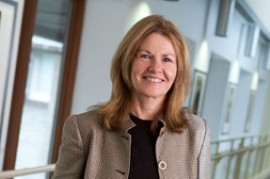What? That headline must be wrong. Women are known for boosting team collaboration and creativity, and they are not afraid to compete. But new research from associate professor of organizational behavior Markus Baer finds that men become more creative and women less so when intergroup competition heats up.
“Women contributed less and less to the team’s creative output when the competition between teams became cutthroat, and this fall-off was most pronounced in teams composed entirely of women,” Baer says.
The findings are counterintuitive because previous research has shown that women generally are more collaborative than men when working in teams.
“If teams work side by side, women tend to perform better and even outperform men – they’re more creative,” according to Baer.
“As soon as you add the element of competition though, the picture changes. Men under those circumstances gel together. They become more interdependent and more collaborative, and women just do the opposite.
“So, what is true for non-competitive circumstances, flips when it gets competitive,” he says.
The study should serve as a caution to managers attempting to use competition among teams to spur creativity. It shows that intense competition can erase the creative advantage that women tend to enjoy over their male counterparts.
Markus Baer discusses his research on how competition kills creativity for women working in groups in the video above.
The simple lesson, Baer said, is that competition should not be used in all situations to stimulate creativity. It’s not going to help women and probably hurts their creativity, so managers should look for different methods of motivation.
“Given that women represent a growing portion of the workforce, using competition as a means to enhance the creativity of groups, regardless of how they are composed, implies that the creative potential available to businesses is seldom fully realized,” the study contends.
Baer emphasizes that nothing in his study suggests women are inherently bad at competition. Rather, it shows that gender stereotypes continue to influence behavior in the workplace.
“It’s not that women stink at competing, it’s that the way society views women and the way we view competition, gender specific, has an impact and that impact is observable in the lab as well as in the field,” Baer said. “It changes behaviors and outcomes.”
Published in the May-June issue of the journal Organization Science, the study is titled “Intergroup Competition as a Double-Edged Sword: How Sex Composition Regulates the Effects of Competition on Group Creativity.”
Findings are based on an experiment involving male and female college students working together in groups, as well as data gathered in the field from 50 teams of scientists, engineers and technicians at a global oil and gas company.
Co-authors include Abhijeet K. Vadera, PhD, of the Indian School of Business, Hyderabad, India; Roger T. A. J. Leenders, PhD, of the Tilburg School of Social and Behavioral Sciences, Tilburg University, The Netherlands; and Greg R. Oldham, PhD, of the A. B. Freeman School of Business at Tulane University.
Thanks to Gerry Everding, WUSTL Newsroom, for his contributions to this post.








 Pollak is the Hernreich Distinguished Professor of Economics in Olin Business School and in Arts & Sciences.
Pollak is the Hernreich Distinguished Professor of Economics in Olin Business School and in Arts & Sciences.